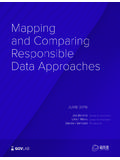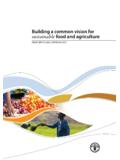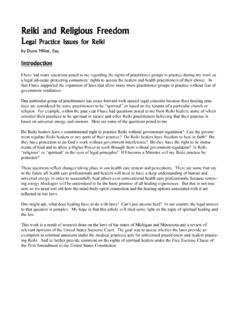Transcription of A review of HSE's risk analysis and protection-based ...
1 A review of HSE s Risk analysis and protection based analysis approaches for Land-Use Planning Final Report September 2004 Delivering sustainable solutions in a more competitive world HSE A review of HSE's Risk analysis and protection - based analysis approaches for Land-Use Planning September 2004 Reference 0016072 Prepared by: Andrew Franks For and on behalf of Environmental Resources Management Approved by: _____ Signed: _____ Position: _____ Date: _____ This report has been prepared by Environmental Resources Management the trading name of Environmental Resources Management Limited, with all reasonable skill, care and diligence within the terms of the Contract with the client, incorporating our General Terms and Conditions of Business and taking account of the resources devoted to it by agreement with the client. We disclaim any responsibility to the client and others in respect of any matters outside the scope of the above.
2 This report is confidential to the client and we accept no responsibility of whatsoever nature to third parties to whom this report, or any part thereof, is made known. Any such party relies on the report at their own risk. CONTENTS EXECUTIVE SUMMARY 1 INTRODUCTION 1 BACKGROUND 1 HSE S ROLE IN PROVIDING LAND-USE PLANNING ADVICE 2 RISK analysis AND ASSESSMENT 3 Study Definition 5 Hazard Identification 5 Frequency analysis 6 Consequence analysis 7 Risk Estimation 9 Assumptions 10 Risk Evaluation 11 Decision Making 11 protection - based analysis 12 2 review OF HSE S RISK analysis APPROACH 15 COMPARATIVE STUDIES 16 HAZARD IDENTIFICATION 18 Comparison of
3 Accident Experience with QRA Methodology 19 review of Accidents at Major Hazard Sites in the UK 19 ASSURANCE Project Findings 22 Conclusions Hazard Identification 22 FREQUENCY analysis 24 Comparison with Historical Accident Frequencies 25 Independent review of HSE s Frequency Data 27 ASSURANCE Project Findings 28 Conclusions Frequency analysis 29 CONSEQUENCE analysis 30 Model and Methodology Evaluation Exercise 31 Comparison with Accident Data 31 ASSURANCE Project Findings 39 Comparison of Toxic Doses and Thermal Radiation Intensities 40 Choice of Harm Criterion 47 Conclusions Consequence analysis 50 RISK ESTIMATION 50 ASSURANCE Project Findings 51 Comparison of RISKAT with SAFETI 52 Conclusions Risk Estimation 53 3 review OF HSE S protection - based APPROACH 54 INTRODUCTION 54 GENERAL POINTS 54 Aims and Terminology 54 Reasons for Using a protection - based Approach 55 Selection of Event 56 Combination of Results 56 General Points - Recommendations 59 APPROACH FOR BULK LPG STORAGE 59 4 review OF ASSUMPTIONS USED 63 5 SUMMARY AND CONCLUSIONS 70 review OF HSE S RISK analysis METHODOLOGY 70 Overall Conclusions 70 Recommendations
4 70 review OF HSE S protection based APPROACH 74 Overall Conclusions 74 Recommendations 74 review OF ASSUMPTIONS USED 78 Overall Conclusions 78 Recommendation 81 review FINDINGS RELATING TO BULK LPG STORAGE 81 Overall Conclusions 81 Recommendations 81 ANNEX A Details of Incidents Reported to MARS EXECUTIVE SUMMARY The Health and Safety Executive s (HSE s) involvement in land use planning, and the principles on which it bases its advice, is set out in the HSE document Risk Criteria for Land Use Planning in the vicinity of Major Industrial Hazards (1).
5 This document was published in 1989 and, therefore, it is over 14 years since the principles in it were determined and agreed. Consequently, HSE undertook a fundamental review (2) (3) of its involvement in land use planning to determine if its approach was still valid, legally robust and in line with broader governmental and European policy. In addition, this review sought to address the expressed concerns of certain external stakeholders that HSE was being too conservative in some of its approaches in this area. The Implementation of the Fundamental review of Land Use Planning (IFRLUP) project was set up to implement the following recommendations of this review : the criteria and methodology used for setting planning zones and for calling in planning applications should be reviewed and, if necessary, revised and then published; HSE s advice to local authorities (LAs) on chemical major hazards and pipelines should be further codified so that consistent, transparent and accurate advice can be given without the demand on HSE resources that detailed individual assessment of planning applications requires; and, the codified generic advice should be devolved to LAs so that they can deal with the vast majority of planning applications which are in the vicinity of chemical major hazards and pipelines.
6 This report forms part of the process by which these aims are being met, constituting a review of the risk analysis and protection based assessment approaches that HSE uses in the course of providing land-use planning (LUP) advice to Local Authorities (LAs). Certain issues (namely Hazardous Substances Consent and the risk / hazard basis for setting the consultation zones) were remitted to HSE s Policy Group for consideration and have not, therefore, been addressed within this report. It is recommended that these issues are fully explored and the outcomes documented. (1) HSE (1989). Risk criteria for land-use planning in the vicinity of major industrial hazards. HMSO.(2) Safety Policy Directorate, HSE. 'Fundamental review of HSE's Policy on Siting and Land-Use Planning for Major Hazard Installations including Pipelines, Report 6, The Land-Use Planning Policy - Recommendations'.(3) HSE, 'The outcome of the fundamental review of HSE's policy on land-use planning for major hazard installations and pipelines'.
7 HSC paper HSC/misc/02 RESOURCES MANAGEMENT HSE 0016072 SEPTEMBER 2004 i HSE uses either risk analysis or protection - based analysis for establishing the LUP zone boundaries around a particular site. In general, risk analysis tends to be used for sites handling toxic materials, whilst protection - based analysis tends to be used for sites handling flammable materials. A formal validation of risk analysis methodology is not possible, since the predictions of the method cannot be compared with an experimental measurement. Therefore the following strategy has been adopted in seeking to review HSE s risk analysis approach: each element of the risk analysis (hazard identification, frequency analysis , consequence analysis , etc.) has been examined separately by various means; and, the risk analysis results obtained using HSE s approach have been compared with those obtained by other analysts and / or using other models for the same situation.
8 Details are provided in Section 2 of the report. The review of HSE s protection - based analysis approach has comprised: consideration, in general terms, of the use of protection - based approaches by HSE; and, examination of the protection - based analysis approach for a specific type of installation. The findings are discussed in Section 3 of the report. In addition, a large number of the assumptions employed HSE when performing either risk analysis or protection - based analysis have been reviewed. The review is presented in Section 4 of the report. review OF HSE S RISK analysis METHODOLOGY Overall Conclusions On the basis of the reviews conducted, it is concluded that HSE s risk analysis methodology is generally fit for purpose. No evidence was found that would indicate that HSE s methodology is either excessively conservative or excessively non-conservative. It should be noted that: at the time of writing, a separate project to perform a detailed evaluation of HSE s consequence analysis methods and models had not been completed; and, ENVIRONMENTAL RESOURCES MANAGEMENT HSE 0016072 SEPTEMBER 2004 ii certain assumptions relating to HSE s approach to Hazardous Substances Consent were excluded from the scope of the review .
9 Recommendations The recommendations arising out of the review are that: 1. if in the future HSE seeks to apply QRA to types of plants more complex than those currently analysed using QRA, HSE consider supplementing the top down (1) (see Section of the report) approach to the identification of hazards with other methods; 2. HSE considers whether events resulting in unintended releases from vents (such as vessel overfill during transfers from road tankers) should be included in risk analyses for sites storing chlorine or other pressurised liquefied gases; 3. in the case of sites storing or using water reactive materials (such as sulphur trioxide), HSE considers whether the risk analysis should include scenarios where water is inadvertently added to the dangerous substance (for example, where water may be used for cleaning of tanks or equipment); and, 4. HSE performs further investigations into the significance of hazards arising from undesired chemical reactions and, if necessary, develops a means of including such hazards in a risk analysis .
10 review OF HSE S protection - based APPROACH Overall Conclusions The terminology used in relation to protection - based analysis is not well defined. Similarly, for a given type of installation, the reasons for resorting to a protection - based analysis , and the reasons for the selection of the particular event (or events) chosen to define the LUP zones are generally not well explained or documented. As further research and development is performed, protection - based analysis may be replaced by risk analysis for some types of site. In particular, adoption of fatality as the harm criterion (in the form of the Total Risk of Death, or TROD) instead of dangerous dose would deal with some of the objections to using risk analysis in particular cases. However, even if risk analysis methods for all types of major hazard installation (MHI) were available, there may continue to be other reasons justifying the use of protection - based analysis . A protection - based analysis could still be appropriate where: (1) The 'top down' approach involves identifying potential sources of releases of a dangerous substance by considering failure of the equipment within which the substance is RESOURCES MANAGEMENT HSE 0016072 SEPTEMBER 2004 iii the Hazardous Substances Consent documents contain insufficient information for a risk analysis ; the surrounding population density and demand on land-use are low; and, a protection - based analysis would generate similar results (in terms of the sizes of LUP zones and the advice given) to those from a risk analysis .
















